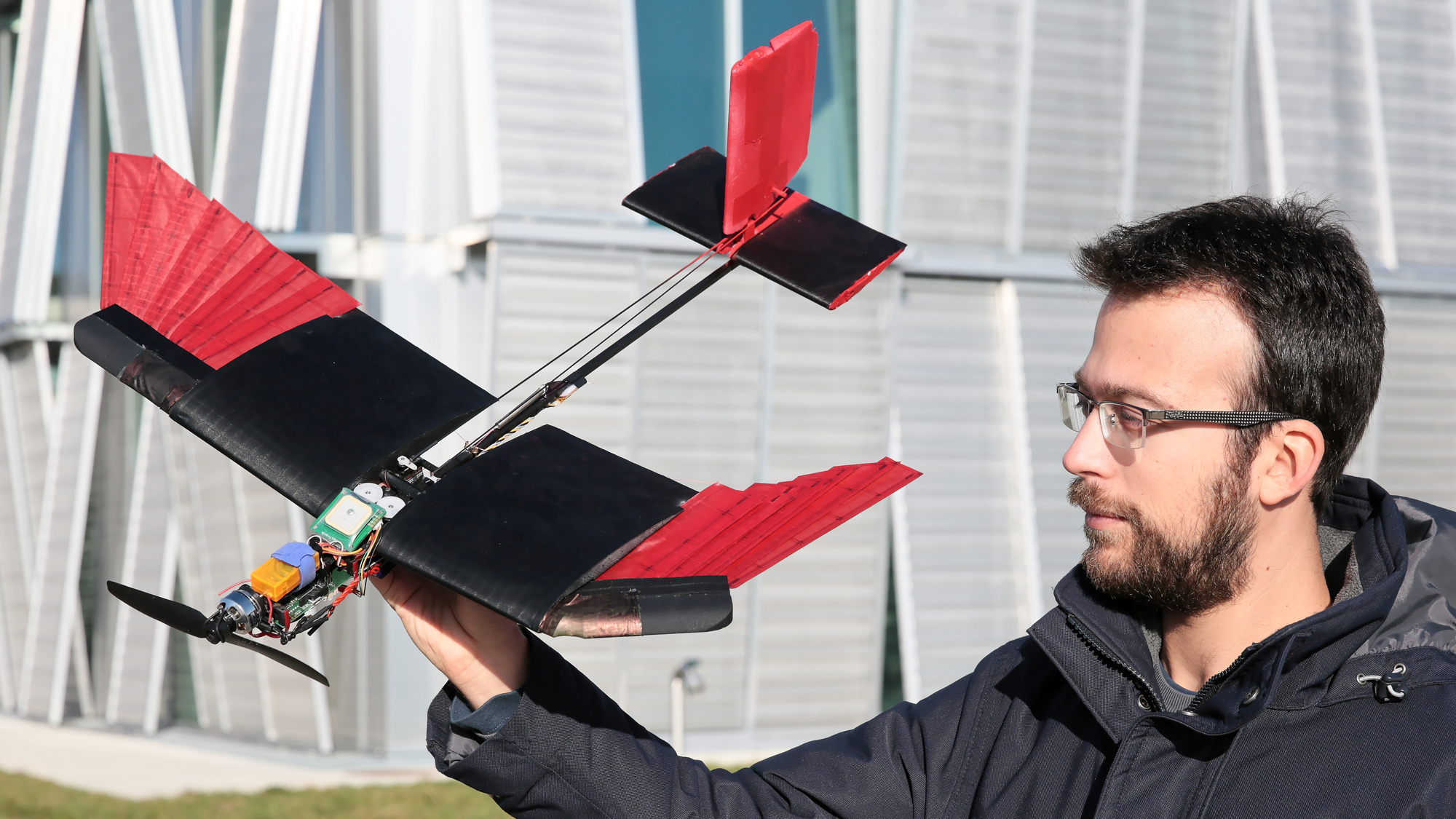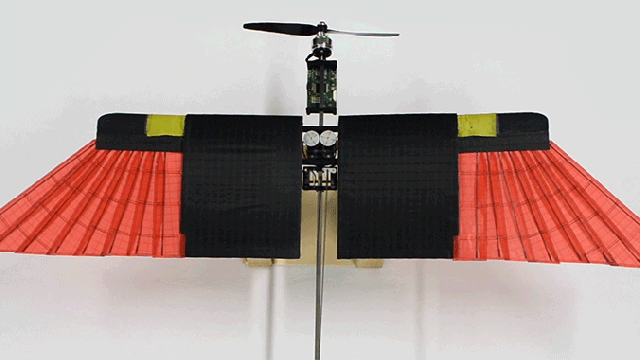Even the most manoeuvrable aircraft we’ve designed is no match for the agility of a bird. Mother Nature has all but perfected flight, so why are we wasting our time re-inventing the wheel? As researchers at Switzerland’s École Polytechnique Fédérale de Lausanne realised, we should just be copying our fine feathered friends.
Planes are purpose-built for the environment they will be flying in, or the tasks they will be completing. If an aircraft will be flying at high altitudes or carrying heavy loads, large wings are needed to give it enough lift to stay airborne. But if it needs to move fast with more agility, smaller, swept-back wings make them more aerodynamic and manoeuvrable.

Designing aircraft is all about trade-offs, but birds can instantly adjust the shape and size of their wings, and positions of their feathers, to adapt to almost any condition for optimal flight. So the researchers at École Polytechnique Fédérale de Lausanne’s Laboratory of Intelligent Systems built a drone with similar flying capabilities by adding flexible, folding, artificial feathers to the ends of it wings.
Working like the large quill feathers found on the end of a bird’s wings, these artificial feathers can be quickly swept back mid-flight, individually or separately, allowing the drone to not only make sharp turns, but also adapt to changing wind and weather conditions.
Is the feathered drone as manoeuvrable as a similarly-sized bird? Not quite yet. A bird’s wings are far more flexible and adaptive than this drone’s upgrades are, and part of a bird’s impressive agility comes from the fact that it propels itself by flapping those wings, where as this drone still relies on a propeller. But bio-mimicry, and taking design inspiration from living things, is a great way to take advantage of what Mother Nature has already figured out after aeons of beta testing.
As with a lot of research there are currently no plans to start upgrading fleets of drones with feathers on their wings to improve their flight performance. The feathered drone developed here is just a proof-of-concept, and an important first step for the technology. In order for an agency like the FAA to approve a design like this, those artificial feathers will need years of testing to prove they’re as durable as the rigid wings currently used on aircraft. Remember, birds can regrow their feathers, but planes can’t make their own replacement parts.
